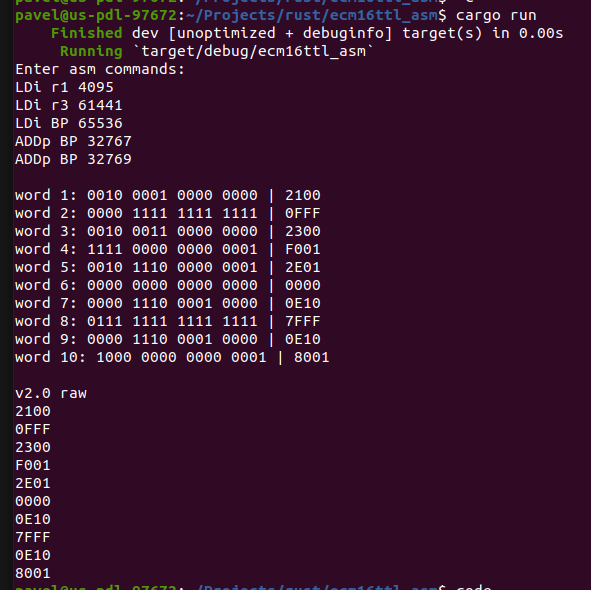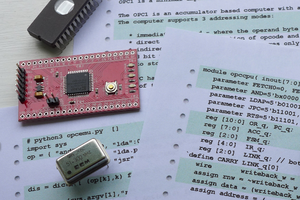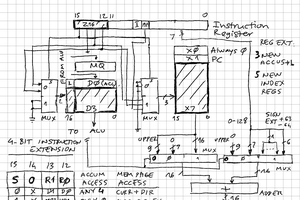The instruction set for ECM-16/TTL homebrew CPU can be subdivided into several broad categories:
- ALU operations on General Purpose Registers
- MOVs
- Loads of immediate values into registers
- Loads/Stores via explicit (direct) address
- Loads/Stores via address stored in Memory Pointer + offset
- Jumps
- Arithmetic operations on Memory Pointers
- Miscellaneous operations outside above categories.
These categories are defined by State Machine branching diagram.
 Pavel
Pavel


 Ed S
Ed S

 zpekic
zpekic